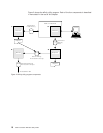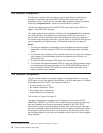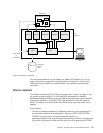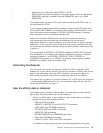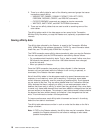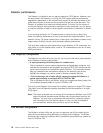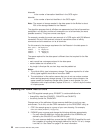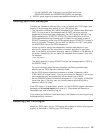
Detector performance
The Detector is intended to be run against production CICS regions. However, over
the period when the Detector is running, the CICS region suffers a performance
degradation (dependent on the workload and number of affinities) equivalent to the
performance impact of vendor monitor products that use the same user exits. The
Detector is intended to be used over limited periods. To further limit the impact of
running the Detector during periods of particularly heavy workloads, you can pause
or stop the collection of data, or select specific commands or transactions to search
for.
If your naming convention for TS queues uses a unique counter as part of the
name, the Detector performance is likely to be worse than described above. This is
because if every TS queue created has a unique name, the Detector creates a very
large number of affinity records, which adversely affects performance.
The most likely reason for poor performance is the detection of TS commands. You
may prefer to run the Detector twice, once for TS commands and once for all other
affinity commands.
The Reporter component
The Reporter is a batch utility that you can use to convert the affinity data collected
by the Detector into two output formats:
v A report presenting the affinity data in a readable form
This is intended for use by system programmers and application designers, and
indicates the transactions and programs issuing the EXEC CICS commands that
cause inter-transaction and transaction-system affinities. This information should
help you understand the transactions making up the workload, and should
highlight the changes you need to make to remove unwanted affinities.
v A file containing a set of basic affinity transaction group definitions in a
syntax approximating to the batch API of CICSPlex SM
This is intended as input to the Builder, which can merge these basic groups into
the combined groups suitable for input to CICSPlex SM.
The input to the Reporter is the three files of affinity data from a single CICS region.
The output from the Reporter therefore describes the affinities detected in a single
CICS region.
Note: The output produced may not contain all the transaction affinities in the CICS
region concerned, because some affinities may not have been found by the
Detector. You may have to supplement the basic affinity transaction groups
with information from the Scanner report, or from your own knowledge of
your transactions, before using the file as input to the Builder.
The Builder component
The Builder is a batch utility that you can run against a set of files containing the
basic affinity transaction group definitions as created by the Reporter. The Builder
produces a file containing combined affinity transaction group definitions suitable for
input to CICSPlex SM.
18 CICS Transaction Affinities Utility Guide



